How to Travel the World On a Budget ($10K/Year) While Not Being Cheap
If you are secretly thinking about how to travel the world on a budget, let’s say on $10K a year, this post will definitely come in handy! Really, you don’t need to have a lot of money to be able to travel. It is totally possible even if you are on a tight budget.
I know, with the pandemic the world of travel changed. It became more challenging and as some people claim more expensive. While I personally agree that it is more challenging to travel these days, I definitely will not agree on the ‘most expensive’ part. In my experience, it is actually much cheaper to travel now than before. A lot of companies decrease prices to attract travelers and offer fantastic deals. And it will continue like this for quite a long time. This is one of the reasons why we are back in Turkey now. We simply had to return and explore more of it with such low prices.
Travel will not return to the same level anytime soon. More countries will start opening up under their own rules but the majority of travelers will prefer to travel locally or in their region than going to faraway places around the world. Yet, travel will be more possible.
If you are thinking to go to travel in the nearest future (with the vaccines it looks like it becomes more and more realistic), it’s time now to start creating a spending plan. And if you don’t have a lot of money, I want to encourage you and say that traveling with $10K a year is real.
There are a lot of tips from different people regarding how much money one should have in order to travel long-term and feel comfortable.
I have personally seen reports with such numbers as $20K and $30K per year and then I met someone who spent around $15K when traveling solo around the world. Honestly, I don’t think that having $30K for one year of travel is something extraordinary. Even $20,000 is still enough money. If knowing how to spend it smartly, this amount can keep you going for way longer than just 12 months.
We didn’t have 30 thousand dollars with us when leaving the U.S. Actually, there were not even 20 thousand in our account. What we had was $15K and a desire to work online and see the world.
We knew that we had to make this money last for one long year of travel. And you know what? It lasted for longer. What’s going to be more surprising is a fact that we didn’t spend a night in a hostel, didn’t sleep in tents, hammocks or night trains. Also, rice and noodles were not the only foods we ate.
That year was full of adventures, lots of new countries, and experiences. We ate loads of delicious and healthy foods, drank liters of coffee, swam in infinity pools, went to spa centers, slept in castle hotels, and hiked gorgeous trails.
As a couple, we spent slightly less than $10 thousand. If you are interested to know where we went and what we did, you can read this post. But a goal for today’s article is to show you that travel around the world with little money, in our case on $10K a year, is possible. More than that, this amount will cover expenses for two people.
So, here is a mini-guide to how to travel the world on a budget:
Please note: This post contains affiliate links. I may earn a commission if you make a purchase by clicking a link (at no extra cost to you).
1. Set a Plan on Where to Go and How Much Time to Spend in One Place
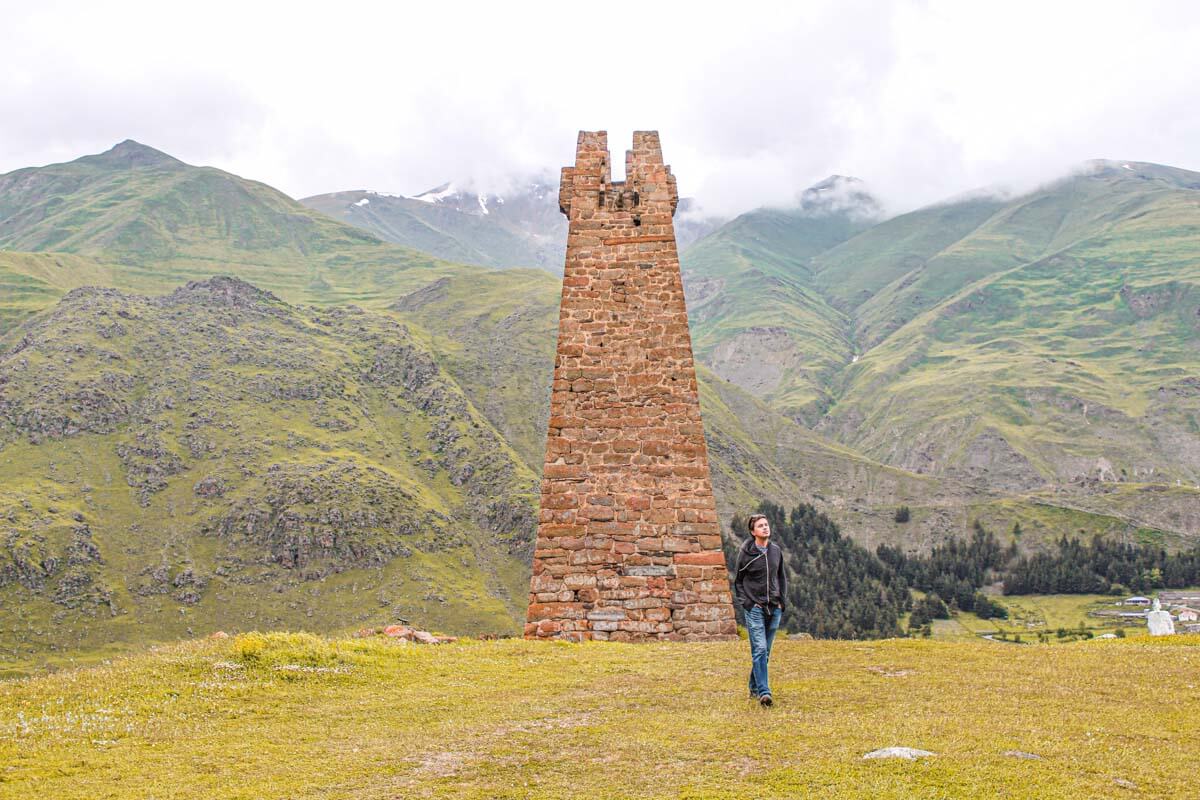
Knowing where to go and how much time to spend in each place will help you understand how much to budget. And once you have that budget you can stick to, you are able to relax and enjoy the process. I don’t think making a step by step agenda with precise activities makes much sense.
But if you want to travel the world cheaply and not to stress out on the road over things that you could have planned before, then decide for yourself which countries you’ll travel to and in what order. Also, make an approximate plan which cities, villages, and attractions you would like to cover and what to skip. Do some research and find out what is the cost of travel in those places. Make a plan for how to move between them. It is very important because last-minute decisions always cost more.
Flights between many countries within the same continent are usually cheap but not if you are waiting until the last day. Some types of transportation (like first-class or sleeper trains, ferries) sell out quickly. Nice accommodation on a budget is usually also booked in advance.
Do not hope to go with a flow and book everything along the way. Better have a precise idea of where you’ll go and when especially if thinking to travel on a budget in Europe. Also, don’t plan to visit 50 countries in 12 months. In that way, you’ll end up spending all the money on transportation and getting places instead of experiencing them.
From our experience, I can tell that going without a plan (even an approximate one) can cost a pretty penny later. We used to travel without an idea where to go and when, and then when trying to make a last-minute decision, prices for everything were so much higher that we had to overpay.
RELATED POST: QUITTING MY JOB TO TRAVEL THE WORLD. IS IT SMART ENOUGH?
2.
Get a Travel Credit Card Before You Leave
If you want to travel smart and cheap, get a travel credit card, preferably the one with cash rewards. It will save you money on every purchase.
With a travel card, you don’t need to pay a foreign transaction fee. Also, what we found important is that when you pay in a foreign country with a credit card, the exchange rate set by the bank is always higher than the rate in exchange kiosks. So, in this way, you will be saving money too.
But besides savings, you can earn points on all transactions and later deposit them into the account as cash value and apply towards travel.
More and more places around the world accept credit cards, so you won’t need to withdraw money on every occasion.
As for the card to choose, see what banks of your country offer. If you are from the US, I personally can recommend Bank of America travel rewards card, Chase Sapphire Preferred and Capital One Venture (although the last two have a yearly fee).
Mục Lục
3.
Choose to Travel Slowly to Be Able to Save
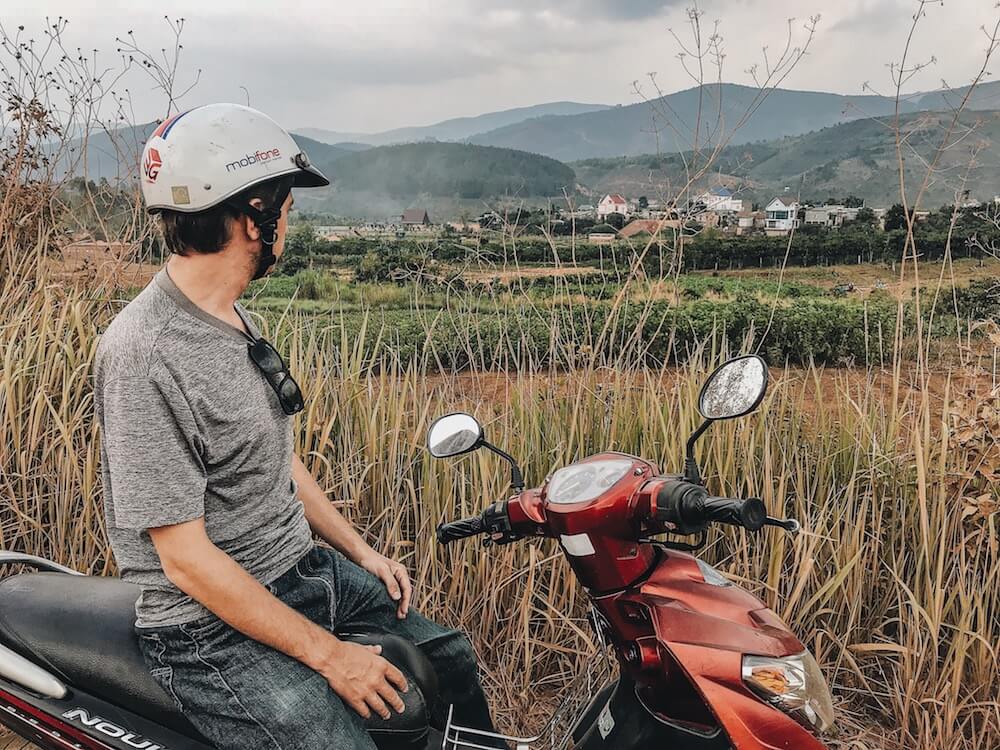
By traveling slowly I mean choosing one city in a new country where you’ll base for at least a month. Better if you make a base there for a few months. Especially in this time, with the corona, it provides more security to have a long-term base. In this case, you’ll be able to rent accommodation on a monthly basis, cook at home, get to know how locals live, and travel within that region. All of it will cost you way less than constant travels from one place to another.
Traveling full-time can get really exhausting and also it takes more resources. Traveling slowly helps to remain positive and energetic.
If you look at budget-friendly destinations, you’ll see that renting a nice but pretty basic room costs between $10-$15 a night. If you multiply by 30 days, it will add up to $300 minimum. But honestly, you cannot count on that. In one destination it may cost $10 while in other $20.
On the contrary, in the same destination, the entire apartment costs between $250-$350 a month. It includes a kitchen that in turn helps to cook at home from time to time and save on food.
With slow travel, you do not necessarily see less. You actually get to experience more, just in one country.
We have been living in slow travel for almost 4 years now. During this time we were based in many cities and traveled qualitatively around many countries. If you are curious to learn what are those places (that I believe are fantastic destinations for budget travelers to live while traveling slowly), check my other posts:
4. Travel There Where You Don’t Need a Visa
Most likely, if you are reading this post, you haven’t traveled much yet. Maybe you’ve seen a few places but I bet there are many more left for you to discover. And if I have to guess, you want to go everywhere.
So, my advice to everyone who is on a shoestring budget but wants to travel the world for a year (or more) – try to start with those destinations where you don’t need to pay for a visa or where at least a visa is cheap.
Different passports have different levels of power, I get that. Still, a lot of those passports enable their holders to travel to some destinations visa-free. Check where you need to apply for a visa or where you can just obtain an ETA and calculate how much it will cost.
Visa expenses in total can end up being a few hundreds of dollars. For someone on a tight budget that’s actually a lot of money. So if you are flexible about where to travel to, start with those destinations where crossing the border is free. Or at least where the cost of a visa is cheap.
Mark and I personally use iVisa website to check if we need visas for every country we go to. It is a very helpful resource where all information is updated regularly.
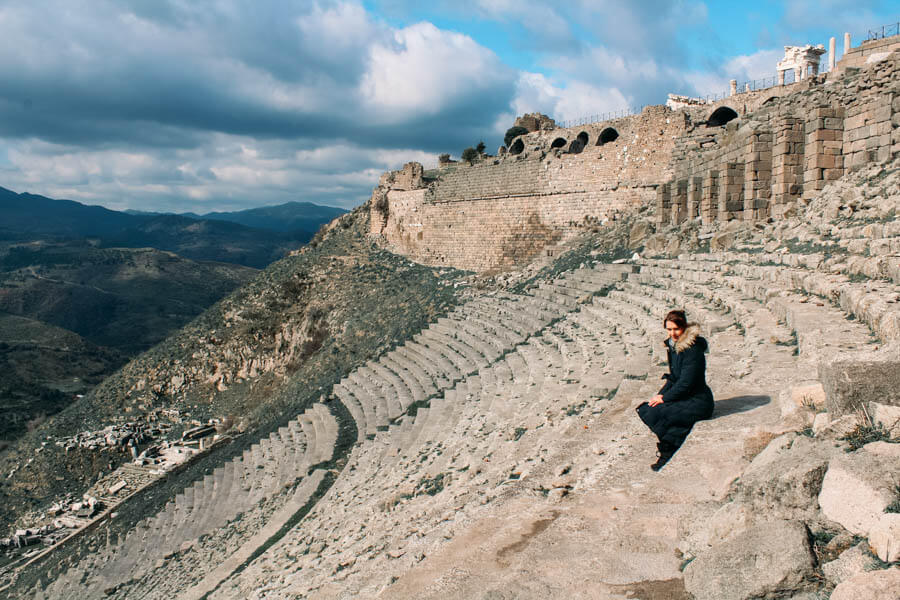
5. Travel There Where You Do Not Need a PCR Test
Oh, this new type of business… a PCR test. Never mind that 50% of the results after the PCR test are incorrect, you still need to get it when entering some countries. And pay for it between $35-$100, depending on the destination where you are flying from. Some countries even went further and created a rule of 2 tests where you need to have both tests in that same country where you arrive.
PCR tests came here to stay. That’s a pretty cool way to make money out of nothing, taking into consideration how many people are ready to pay for them in the name of travel.
Yet, not every country requires travelers to have this test. Some, like Albania, Macedonia, Belarus, Mexico, Dominican Republic, Tanzania (as well as some others) never required it. During the summer, countries that depend on tourism, also remove a requirement for PCR test, like Montenegro, Estonia, and even Belgium lately stopped requiring this test.
To check the latest information on covid-19 travel regulations, see the IATA travel website. They present information on the map, update it regularly, and always include a lot of details.
6. Choose to
Travel to Cheap Destinations
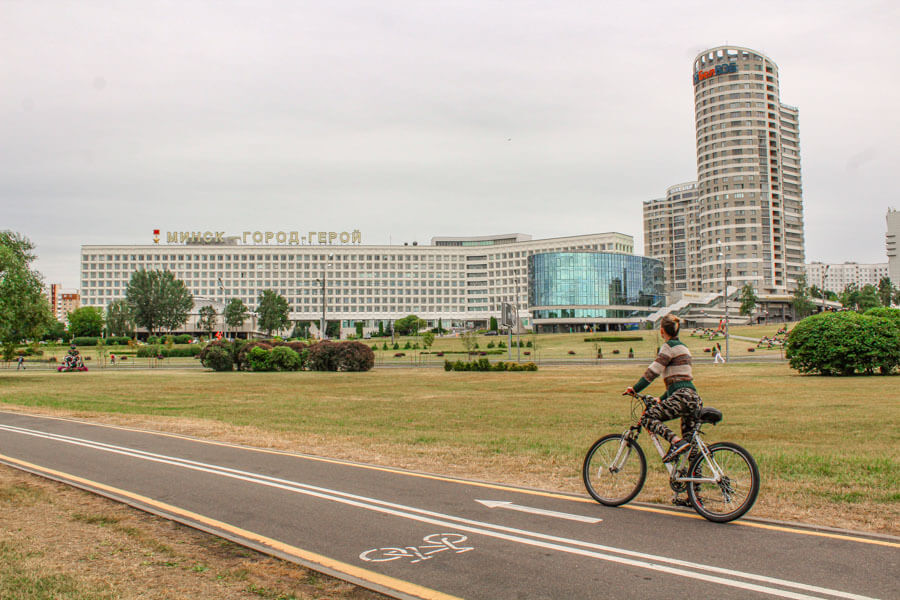
I am sure you could somehow figure that this one was going to make the list. If you want to make sure your saved money will last you longer, choose to travel to cheaper destinations. Each continent has its own cheap countries. And Southeast Asia is not the only place.
In North America, for instance, Mexico is pretty cheap. But don’t look into touristy Cancun, Tulum or Playa del Carmen. Instead, look into Campeche, Merida, Guanajuato, Puerto Escondida, Puerto Vallarta, Guadalajara, etc.
In Europe, look into the Balkans (all countries in this region are very cheap,) Eastern Europe, and some parts of Spain. We lived in Montenegro and spent the same amount of money there as we did in Bali. Bosnia and Herzegovina was even cheaper. Ukraine in Eastern Europe, my home country, is one of the cheapest destinations in Europe where you can have a very good quality of life for little money. Tbilisi in Georgia is also very affordable. Even Istanbul in Turkey, where we are based now, offers a lot of options for budget travelers.
With Southeast Asia, you need to know where to go because some places can be more pricey than others. Singapore is obviously the most expensive, Taiwan is not that cheap and some parts of Malaysia, the Philippines, Bali can also surprise with prices.
If you haven’t opened my post about the cheapest countries to live in Europe, do it now. I included all the countries where you can live with $1000 per month or even less. Even if there is no plan to live in any of them, it’ll give you an idea of how cheap/expensive they are for travel.
7. Pack Everything You Need Before You Leave
Chances are you won’t be taking a lot of stuff when leaving to travel. Still, pack your bags wisely.
While you are still working and having an income stream, buy everything you may need for your voyage ahead of time. Glasses, sunblocks, a bathing suit, sandals, sneakers, towels, medicine, and even a hair muss if you need one. Do not plan to buy those necessities later. In a new country, you may not know right away where the best places to shop are or the same items can be more expensive.
However, it is not really about money only. Running around in a new place may steal your time.
When we made a decision to go to travel, we started to prepare with a lot of time in advance. To pack our bags, in particular, took us two months. During that time we modified our lists a dozen times, adding and removing some items, purchased something extra, and got rid of what we didn’t need.
The only items we bought during our first year of travel were a mosquito spray, sunblock, two hats (how could we forget those when planning to go to Southeast Asia?), and towels (we also didn’t pack them, c’mon.) Oh, and one more thing. I also got a cute handmade swimsuit in Bali for myself. It wasn’t really a necessity though, more of a whim. Also, one time we bought sore throat medicine which didn’t cost much at all.
8. Change Your Habits to Save More Money

If you want to travel the world on a budget, you need to make some changes to your lifestyle.
We all have our own habits and small things that make us happy. For me, some of those things I love are a bowl of smoothie almost every single day, something sweet, and jogging. For Mark, that’s always a cup of coffee, workout, and beer. When we were living in America, we paid for all those things around $200 each month.
When we started to travel, we realized that we couldn’t have smoothies all the time (this type of food is pretty expensive everywhere), buy coffee on a daily basis (which our bodies don’t need anyway) and we couldn’t pay for a gym. So we made a lot of changes. No, we didn’t quit them but we changed the routine.
Instead of paying for a gym, we always follow home workouts, jog, and exercise outside when the weather is warm. For example, now while living in Istanbul, we are renting an apartment near the park and seaside. The only time we paid for a gym was during our long stay in Ukraine.
For smoothies and coffee, we decided to purchase a portable coffee maker and a compact travel blender that we pack in our suitcases for many trips.
While I will never try to tell anyone to stop exercising and eating healthy, I will definitely encourage you to realize where you are overspending. Most likely you are spending more on long-held habits. Are you a smoker? Drinker? Coffee, fast food, soda addict? All of this will be taking a good chunk of money out of your monthly budget.
If you want to learn cheap ways to travel, cut your spendings, and quit bad habits because they may be costing you more than anything else.
9. Go Only There, Where Flights Are Cheap
Do you know how we choose a destination where we want to go?
There are a lot of countries that interest us. When picking our next base, we always search for tickets first. The cheapest and most convenient flight always wins.
Before planning your itinerary, first of all, learn how to find cheap deals. Make a list of countries you want to visit and then start looking at which country is cheaper to fly to. Sometimes distance doesn’t matter. You may find a better deal to fly from the U.S. to Europe than to Costa Rica or even Mexico.
A few years ago, while being in Ukraine, we found the cheapest ticket to Chiang Mai and this is why we ended up there. This year, the cheapest ticket was to Antalya, Turkey, so we chose to go there. Plus, with curfews and lockdowns that do not affect tourists, it is really an amazing time to travel to famous Turkish sites.
Play with different airfare search sites (we always compare on Expedia and Google Flights), use some luxury travel hacks, make sure to check prices from Tuesday to Thursday (especially at night), look for connecting flights, and compare prices.
I recommend buying tickets for at least the first three months of your travels. The rest you can buy along the way.
NOTE: If you are unsure you’ll travel or not, I recommend purchasing a refundable ticket. It usually costs a bit more but you’ll be able to return all your money in case of cancellations or change of plans.
10. Find Complimentary Accommodation
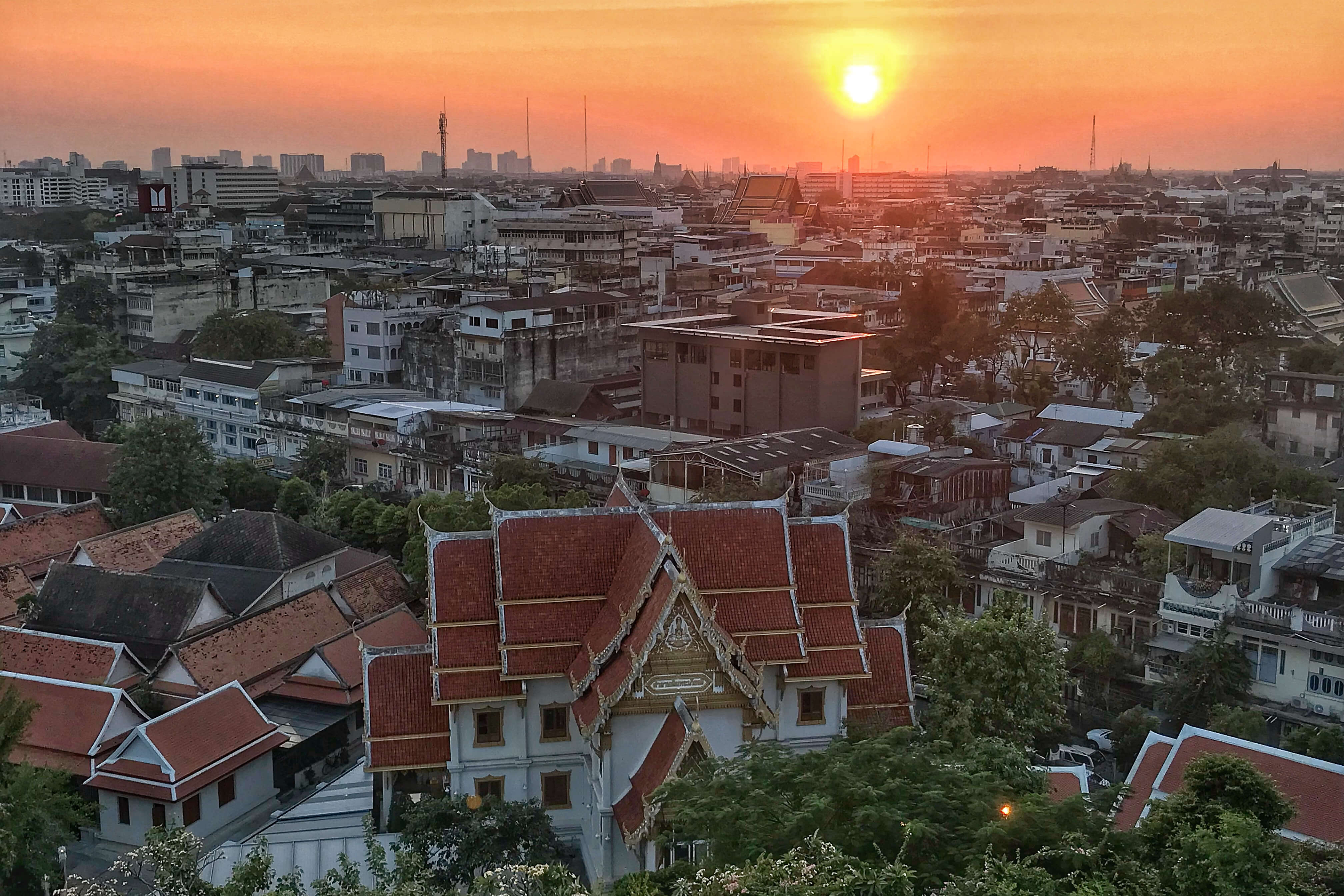
Complimentary accommodation does not always come as free. Sometimes you may need to do some work in exchange but it is worth it so much.
Getting this type of accommodation is good if you plan to travel to prime destinations such as Western Europe, Scandinavia, Australia, New Zealand, United States, Canada, etc. With these countries, you can always house sit, volunteer, camp for free or little money, couchsurf, or work in exchange for food and a place to sleep. Most of these opportunities, especially international housesitting, will cover your room and board and sometimes provide a car.
Before Mark and I left America we spent 3 months traveling from the West Coast of the U.S. through Vancouver and then to Banff National Park and then all the way to Vermont, staying in free accommodation. This is how we ended up paying less than $1500 for all that time. I talk more about what we did and where we stayed in this post on work in exchange for accommodation and food. Give it a read.
11. Or Choose to Stay With Locals
Another option for cheap accommodation is to stay with locals. Besides the money, it also provides an excellent opportunity to immerse in a new culture, get to know how people in that country live, and experience something different than a hostel or even Airbnb.
Our favorite websites for short and long term stays with locals are:
– Homestay – rent a room in someone’s home and let the host help you learn about local life
– Servas – a hospitality exchange network, similar to Couchsurfing but with a mandatory yearly fee and stricter sign-up.
– HelpX – one of our favorite platforms that connects B&Bs, farms, hostels, homeowners with volunteers.
– Agoda – this website has quite a few pretty awesome guest houses in Asia.
– Trustroots – another website similar to Couchsurfing. But here, you are able to find a host based on the same interests as you have.
12. Also… Stay in Monasteries
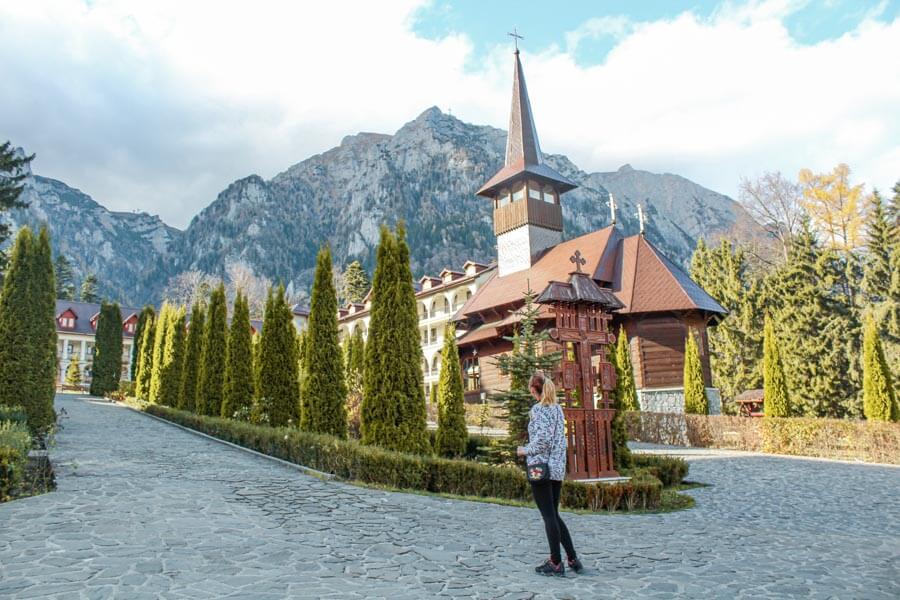
We accidentally learned about this option on our road trip from Bucharest to Brasov. And we almost stayed overnight in a beautiful Caraiman Monastery, perched on a hill overlooking the mountains.
While walking on its beautiful grounds, we noticed a message on a door saying that there were rooms available for rent. The price per night was less than €10.
Later, I decided to do some research and found out quite a few monasteries around the world where both male and female travelers can stay. That’s an amazing opportunity to save money on accommodation and experience something truly unique!
For a long time, religious institutions have been receiving pilgrims. And this opportunity stayed with us to this day. However, don’t expect much. Usually, monasteries offer overnight stays with very ascetic conditions – only a bed, a table, and very simple dinners. You may also need to visit a religious service.
But, stays are very quiet and peaceful and you need to be in bed by a certain time. So, it won’t work to get there late at night from the nearest bar.
Some monasteries have a fixed rate per night, like hotels, but others will be grateful for a symbolic charity contribution. To find out more details, see this article.
To find a monastery or temple for the night, check these sites:
– Monasterystays – monastery stays in Italy, Austria, and Slovenia
– Goodnightandgodbless – mainly monastery and church stays in Europe
– Templestays – stays in Korea
13. Look for New Apartments on Airbnb
Honestly, I am not a big fan of Airbnb anymore. I used to be in the past when it has just come to the market and was relatively new to everyone. But after a while, after traveling for a bit and staying in various Airbnbs on three continents Mark and I noticed how much Airbnb changed for the worse. Lately, we started to use VRBO in those destinations where it is available.
Through Airbnb, many times we paid a lot of money for a place which was dirty and not the same as in pictures, some owners didn’t seem to try hard to provide the best service, sometimes Airbnb team didn’t care, other times we had issues with the apartment and nothing was done to fix it. Overall, we started to notice one pattern – prices for apartments are constantly unreasonably increasing but the level of service and quality gradually goes down.
Another thing that caught our eye is a fact that many Airbnbs are owned by real estate agencies, not locals as Airbnb promotes. And in turn, it creates a totally different experience.
So, our trust got undermined. Still, we recommend this concept in a few cases. One of them is when you travel long-term and need an apartment for a minimum of 28 days. To save money, when we book a flat for that much time (or more) we always go with new apartments only.
The reason for that is an additional discount from Airbnb. Usually, when the owner signs up and is willing to rent out his home, Airbnb always suggests giving a discount to the first 3 people who book his property. Besides a regular long stay discount, they are supposed to provide an extra one. Many times this discount is between 30 and 50 percent.
If you look at some destinations, you will be surprised to find some amazing deals. For instance, when we were looking for homes in Norway, the average price was around $1,500 per month but a new apartment that recently popped up on Airbnb cost around $800. Soon we are going to Spain, flats there (the type we are looking for) cost a minimum of $1,000 per month. We waited for a new one to show up and secured it for $670. I think it is still expensive for that region, but we decided to simplify our search.
In cheaper destinations, you’ll be able to score places for a few hundred dollars only. See it for yourself.
14. Look For Farm Stays
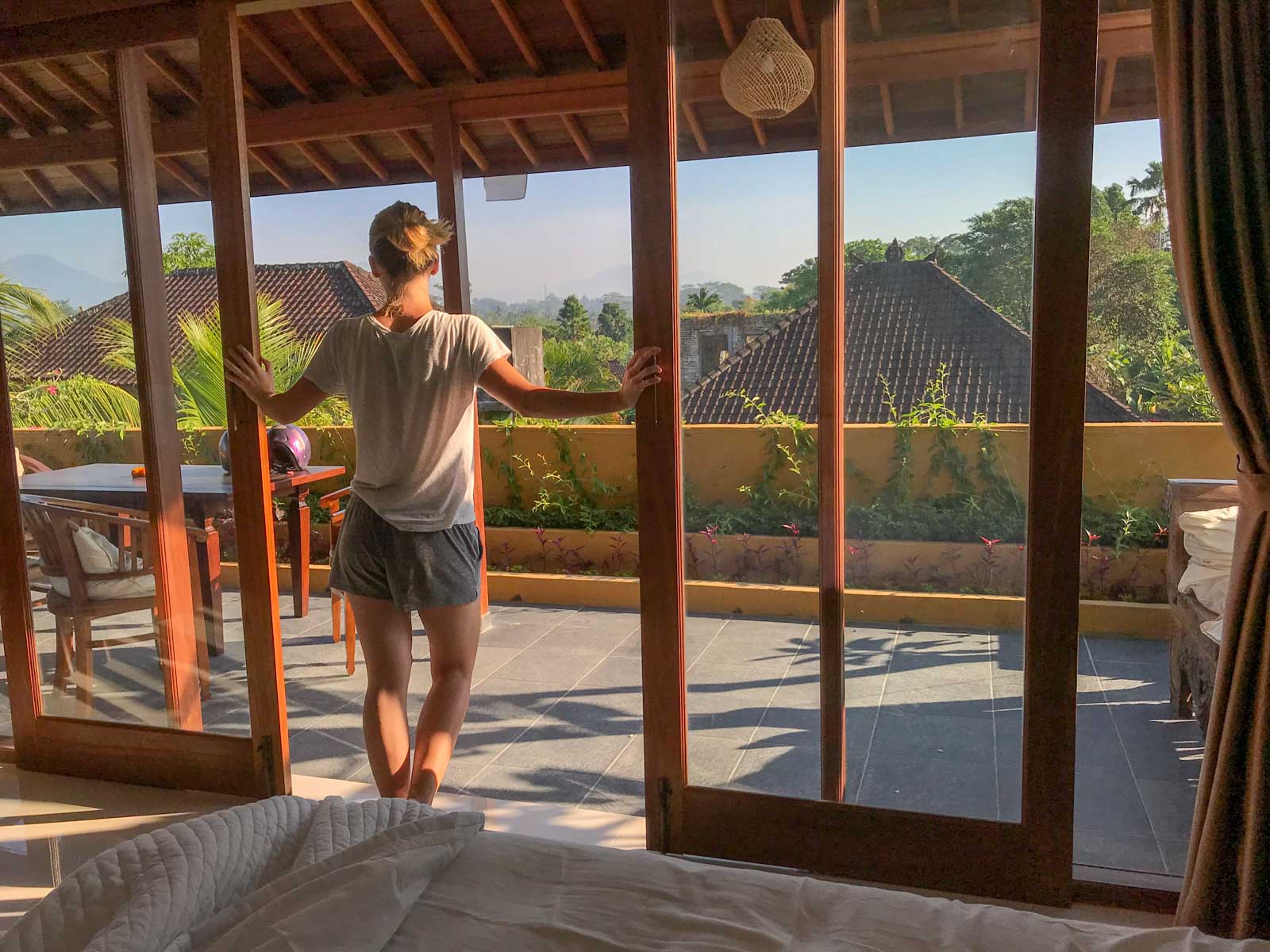
Would you like another hack on how to travel the world on a low budget? Then choose to live on a farm.
No, I am not talking about WWOOFing or workaway.
I mean a farm stay without a need to work. There are quite a few farms in some countries that offer accommodation. You can stay on a farm you like, learn how it works (for example, see how the cow is milked), and enjoy outdoor activities.
The conditions of such a stay vary. It can be an ordinary tent or luxuriously furnished apartments. Of course, the luxury cottage for a budget traveler will cost a lot. But, there are also cheaper options.
On average though, a modestly furnished room with amenities on a farm will cost around the same as a budget hotel in the same country.
You can find farm stays on the following sites:
– Farmstay – farm stays in England, Scotland, and Ireland
– Downunderfarmstays – farms in Australia
– Traveletti – farms in Hungary, Ukraine, Poland, Greece, Portugal, France, Spain, and Italy to help you travel Europe on a budget. Their service is unavailable at this time due to covid but keep it in mind for the future.
– Farmstayus – farm stays for budget travel in the USA
– Farmstaycampingaustralia – stays in Australia
15. Or Look For a Home On Spot in a New Country
If you plan to stay in one place for as minimum as a month and haven’t found anything decent and affordable on Airbnb yet, do not panic. I recommend booking accommodation for the first 3-4 nights and once you get to your destination, start looking around among locals. Or, join local Facebook groups.
We always follow this strategy and always have success in finding something. This is how we found lovely and rather cheap apartments in Vietnam, in Thailand, and in Bali. In Montenegro and Turkey, we found beautiful flats through the Facebook group.
So do not worry if the choice of flats online is not ample. In many countries, you’ll find it quickly enough.
16. Rent a Car If Traveling in Europe
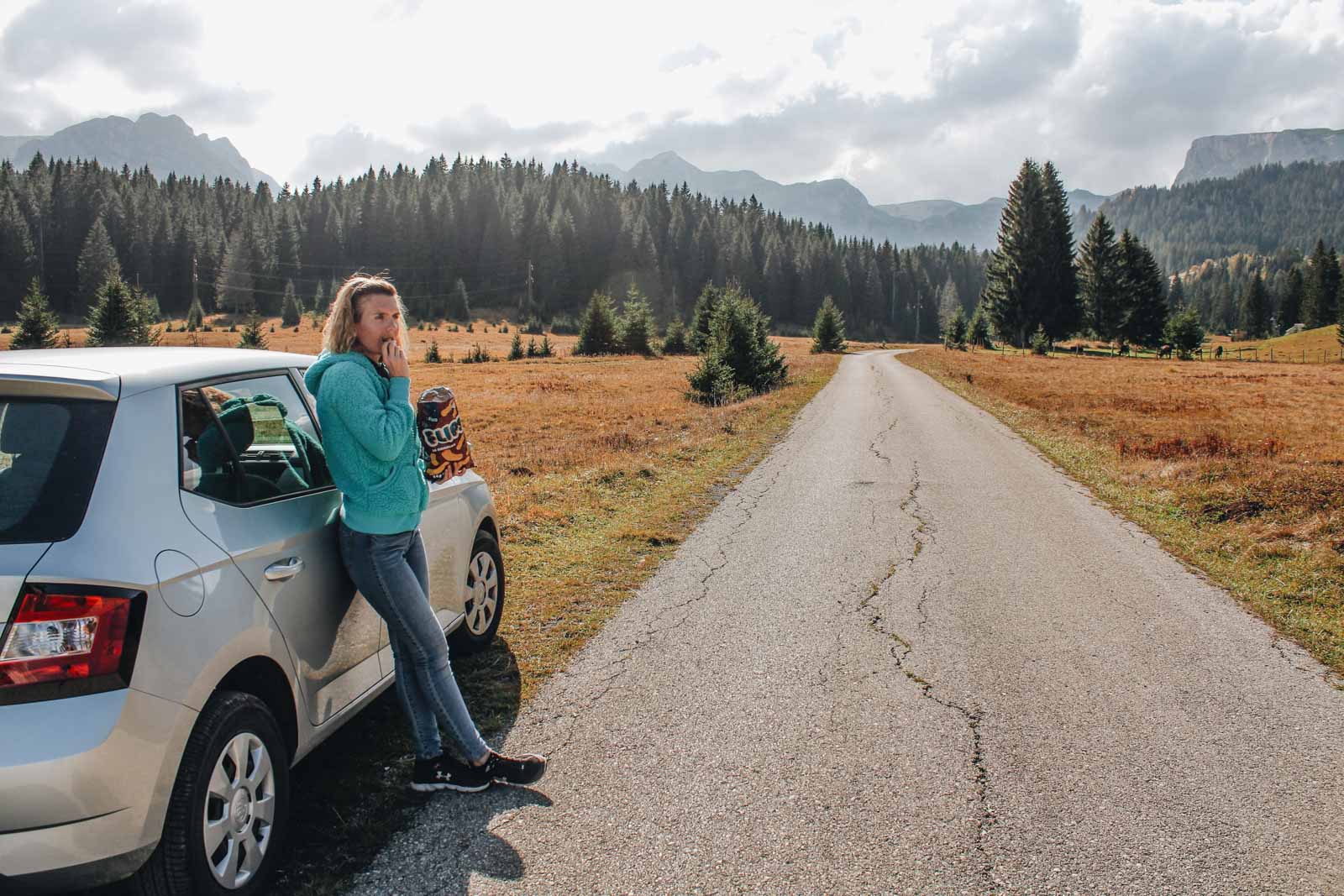
Yes, exactly, if you are wondering how to travel in Europe on a low budget, rent a car. It is a smart move that is going to help you save money and see more. And I’ll explain how.
If you start searching for deals and try to book in advance, you can rent a car for as little as $20-$25 per week (sometimes per month!) There are endless offers from various rental companies that offer fantastic deals in different parts of the European continent.
We rented a car in Barcelona for $18 for 10 days in late November, in Bucharest (Romania) for $25 for the entire month (which we canceled due to a change of plans,) and later we paid $85 per month, $45 per week in Sarajevo, $30 for 2 weeks in Milan and more. Renting a car in Tbilisi and Montenegro was way more expensive but for the most part, renting a car in Europe was pretty cheap. Recently we rented a car in Turkey for as little as $8 per day.
If traveling solo, hiring a car may actually cost you more but for two people it is a perfect opportunity to save money on transportation. Buses and trains are not that cheap as companies try to promote and you may end up spending more for two people on one round trip between cities than on a car rental and gas for the entire week (which also allows you to be flexible.)
With this strategy though, you have to visit Europe during the offseason and also target to visit cheaper destinations. During the high tourist season prices are so high, that omg, your $10,000 will disappear sooner than you think.
RELATED POST: # 1 TIP ON HOW TO SAVE MONEY FOR TRAVEL
17. Eat/Drink/Shop Smartly
Food costs always come second after accommodation costs and can take a lot out of your budget. To be able to travel the world not spending much, try to cook at home more, especially if you are traveling in Western World countries.
Eating out in Southeast Asia, surprisingly, is cheaper than when you cook at home, but only if you choose street food. Trips to restaurants and cafes add up and can cost a fortune. South America and Eastern Europe are very affordable in this sense too.
We always cook when we travel. Our daily food expense is between $10-$15, depending on the destination. This cost always covers meat or fish products, lots of veggies, fruits, smoothies, coffee, tea, and occasional eating out and desserts. There is never a moment when we say “no” to ourselves when it comes to food, and we always eat local food.
I honestly don’t understand how some people manage to eat only rice or vegetables in order to cut costs. Doing it they lose so much. Trying local foods is part of the experience, please, spend some money on local food. Also, you need to stay healthy and watch your diet by eating healthy whole foods. There is no way for your body to be healthy if consuming rice or vegetables only.
Another note is about alcohol and coffee. You would need to cut on those to save money too.
18. Be Selective When It Comes to Attractions And Entertainment
I know, when you travel you want to have fun and do as many activities as you physically can. But don’t be in a hurry. Price for those attractions matters.
Physically you can’t do everything anyway, but choosing one activity over another does not mean you don’t get to know the country. Each destination has plenty of free or cheap things to do, so there is a lot to choose from. Avoid attractions oriented solely on tourists, even in poor countries they cost a fortune. Choose those activities that locals choose for themselves too.
For certain destinations, like Cambodia, for instance, you still want to budget money to be able to do some sightseeing. Angkor Wat entrance ticket for 3 days costs $62, but it is well worth it. Visiting ancient Pergamon in Turkey was also worth every penny, like many other sites we went to. Yet, every country has also hundreds of activities or places that don’t cost any money. Take advantage of that and have a fabulous time!
To travel the world for 10 thousand dollars a year is not a difficult task to do if you carefully plan your trip. I do advise though to put aside at least an extra $2000, just in case if there is a day when you need it. If you can have more, it’s even better. Having “emergency money” always makes you feel more confident even if you don’t make use of it.
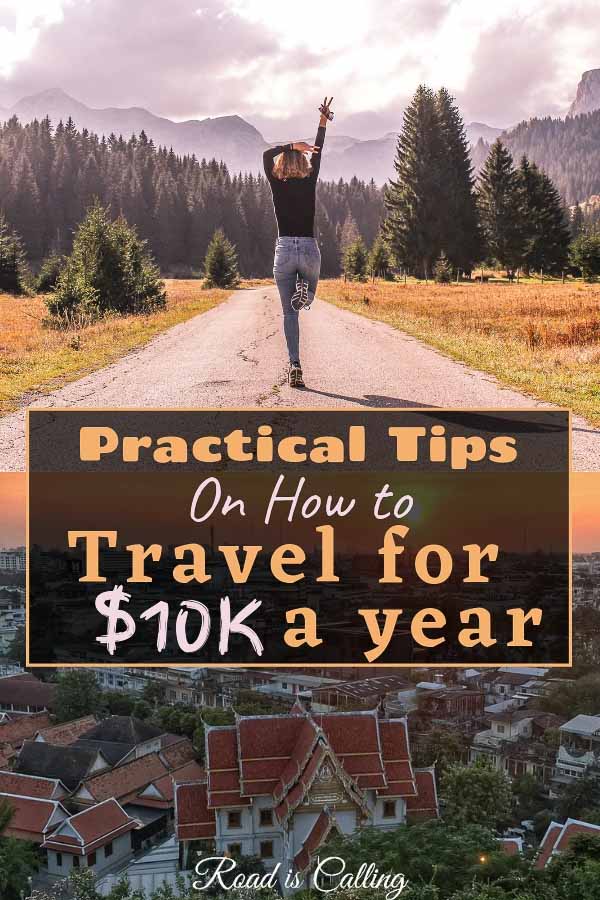

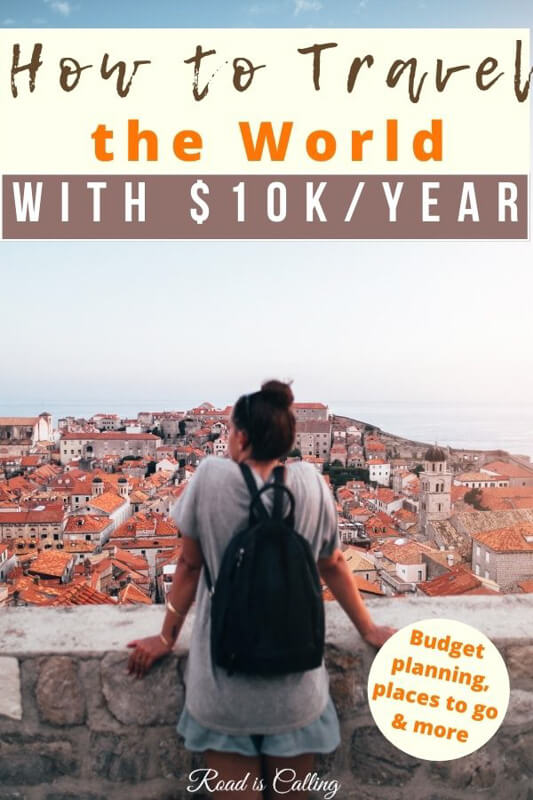















![Toni Kroos là ai? [ sự thật về tiểu sử đầy đủ Toni Kroos ]](https://evbn.org/wp-content/uploads/New-Project-6635-1671934592.jpg)


